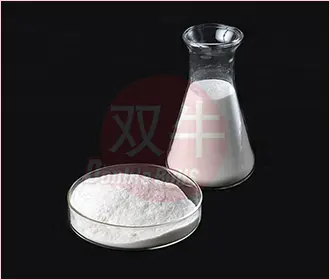Cellulose-based substances (such as microcrystalline cellulose, hypromellose, sodium carboxymethyl cellulose, etc.) are one of the widely used categories in pharmaceutical excipients. Due to their good biocompatibility, stability, and tunable physicochemical properties, they serve multiple key functions in pharmaceutical formulations. Their core functions can be divided into four major categories: formulation shaping, drug release regulation, stability enhancement, and other auxiliary functions, as detailed below:
1. Formulation molding function: ensuring the stability of the morphology and structure of drug formulations
Cellulose excipients are the core support for the "shaping" of solid dosage forms such as tablets, capsules, and granules. They impart a stable form to the dosage forms through physical or chemical effects, ensuring that they do not disintegrate or deform during production and storage:
1. Filler (diluent): Supplement the volume of the preparation to ensure uniform dosage
Core function: When the content of active pharmaceutical ingredient (API) is low (such as only 1mg API per tablet) or the powder has poor fluidity, cellulose excipients can serve as "fillers" to supplement the volume of tablets/capsules (to make the tablet weight reach 50-500mg, facilitating tablet pressing or capsule filling), while improving the fluidity and compressibility of the material, ensuring uniform API content per tablet/capsule (avoiding dosage deviation).
Common types: Microcrystalline cellulose (MCC, such as PH101, PH102) is a classic filler, possessing good fluidity and compressibility, and is compatible with most APIs. It is widely used in ordinary tablets (such as cold medicine tablets, antihypertensive tablets). Hydroxypropyl methyl cellulose (HPMC) can also be used as a filler, especially suitable for APIs that are sensitive to moisture absorption (with low self-hygroscopicity, it can reduce moisture absorption by APIs).
2. Binder: Promotes powder bonding and ensures tablet/particle formation
Core role: During the granulation process before tablet compression or the powder pretreatment before capsule filling, cellulose excipients (mostly water-soluble or water-swellable) can bond loose API powder with other excipients into uniform particles (or directly bond into tablets) through "binding action", avoiding issues such as "loose tablets" (tablets prone to breakage) and "cracked tablets" (cracks on the edges of tablets) during tablet compression.
Common types:
Hydroxypropyl methyl cellulose (HPMC, such as E5, E15): It is often formulated into a 2%-5% aqueous solution as a "wet granulation binder", with moderate bonding strength and good disintegrability imparted to the granules, suitable for most oral tablets;
Carboxymethyl cellulose sodium (CMC-Na): It has good water solubility and strong adhesive force, making it suitable for the preparation of tablets with high hardness (such as chewable tablets) or granules (to prevent granules from powdering during storage).
3. Disintegrant: Promotes rapid disintegration of tablets in the body, releasing the drug
Core role: After oral tablets enter the gastrointestinal tract, they need to be quickly broken down into small particles through the action of disintegrants in order to allow the release and absorption of the active pharmaceutical ingredient (API). Cellulose-based disintegrants disrupt the internal structure of the tablets through "water absorption and expansion" or "capillary action", accelerating the disintegration process (to avoid the tablets being completely excreted in the gastrointestinal tract, resulting in loss of efficacy).
Common types:
Croscarmellose sodium (CCMC-Na): After absorbing water, its volume can expand by 300-500 times, with rapid disintegration, and it is not affected by gastrointestinal pH, making it suitable for ordinary tablets and effervescent tablets;
Carboxymethyl starch sodium (CMS-Na), although a starch derivative, functions similarly to cellulose-based disintegrants and is often used in combination. It has a high expansion rate and good disintegration effect, and is widely used in drugs that require rapid onset of action .
II. Drug release regulation function: accurately controlling the release rate and site of API
Some cellulose-based excipients exhibit "controlled swelling" or "insolubility", making them suitable as "sustained/controlled release matrices" or "enteric coating materials". This allows for the "slow release" (extending drug efficacy) or "site-specific release" (preventing API destruction in the stomach) of the active pharmaceutical ingredient (API) in the body. This is crucial for achieving "long-acting" and "targeted" formulations:
1. Sustained/controlled release matrix materials: prolonging the drug action time and reducing the frequency of medication administration
Core function: In sustained-release tablets or capsules, cellulose excipients form a "three-dimensional skeleton structure", with the active pharmaceutical ingredient (API) evenly dispersed within the skeleton. After oral administration, gastrointestinal fluids slowly penetrate into the skeleton, and the API gradually swells and degrades along with the skeleton, resulting in a slow release that maintains the plasma drug concentration within an effective range (12-24 hours), reduces the frequency of medication administration (e.g., from 3 times daily to 1 time daily), and enhances patient compliance.
Common types:
Hydroxypropyl methylcellulose (HPMC, such as K4M, K15M, K100M): It is a commonly used sustained-release matrix material. The higher the viscosity (such as K100M), the slower the matrix swelling rate, and the more prolonged the API release, making it suitable for the preparation of 12-hour sustained-release tablets (such as nifedipine sustained-release tablets for antihypertensive drugs) or 24-hour controlled-release tablets
Ethyl cellulose (EC): It is insoluble in water but can swell in the gastrointestinal tract, forming a rigid matrix. The active pharmaceutical ingredient (API) is slowly released through the pores of the matrix, making it suitable for the sustained release of water-soluble APIs (such as antibiotic sustained-release capsules).
2. Enteric coating material: Protects the active pharmaceutical ingredient (API) from being destroyed by gastric acid, achieving targeted release in the intestine
Core function: Some APIs (such as pancreatic enzymes, probiotics, and certain antibiotics) are easily destroyed in a gastric acid environment. Therefore, it is necessary to encapsulate tablets/capsules with an "enteric coating" to enable them to pass smoothly through the stomach (pH 1-3) and reach the intestine (pH 5-7) before dissolving and releasing. Cellulose-based enteric coating materials are insoluble in acidic environments but soluble in neutral/weakly alkaline environments, which perfectly meets this requirement.
Common types:
Cellulose Acetate Phthalate (CAP): a classic enteric coating material that dissolves in the intestinal environment with pH > 6.0, effectively protecting the active pharmaceutical ingredient (API) from being destroyed by gastric acid. It is commonly used in enteric-coated tablets;
Hydroxypropyl methyl cellulose phthalate (HPMCP): Compared to CAP, it exhibits stronger acid resistance, better stability, and controllable dissolution rate, making it suitable for formulations that require more precise release at the intestinal site (such as colon-targeted formulations).
III. Stability improvement function: Protecting APIs from external environmental impacts
Cellulose excipients reduce the contact between API and external environment (moisture, oxygen, light) through "physical isolation" or "chemical inertness", or inhibit the degradation reaction of API, thereby extending the shelf life of the formulation:
1. Moisture-proof agent/anti-adhesive agent: Reduce moisture adsorption to prevent the formulation from becoming damp and deteriorating
Core function: Some APIs (such as vitamin C and certain alkaloids) are prone to moisture absorption, leading to softening of tablets, delayed disintegration, or degradation of the API. Cellulose excipients (such as microcrystalline cellulose and ethyl cellulose) have low moisture absorption and can form a "physical barrier" on the surface of the formulation, reducing the infiltration of moisture from the environment and preventing tablets from sticking to the die during compression (anti-adhesive effect).
Application scenario: Adding microcrystalline cellulose to vitamin C tablets and effervescent tablets can effectively reduce the moisture absorption of the tablets and extend their storage period; adding a small amount of hydroxypropyl methylcellulose to capsule shells can enhance their moisture resistance (preventing softening and deformation in humid environments).
2. Stabilizer: inhibits API degradation and maintains stable efficacy
Core role: Some cellulose-based excipients (such as hypromellose and methyl cellulose) exhibit "chemical inertness" and do not react with APIs. At the same time, they can isolate APIs from excipients that may cause their degradation (such as metal ions and oxidants) through "encapsulation", or inhibit the hydrolysis and oxidation reactions of APIs by adjusting the formulation microenvironment (such as pH).
Application scenario: Adding a small amount of hydroxypropyl methylcellulose to oral liquid preparations (such as syrups) can encapsulate API molecules, reducing their contact with oxygen and inhibiting oxidative degradation. In tablets containing metal ion-sensitive APIs, adding sodium carboxymethylcellulose can chelate a small amount of metal ions, thereby reducing the degradation of APIs.
IV. Other auxiliary functions: optimizing the user experience and production efficiency of the formulation
In addition to the aforementioned core functions, cellulose-based excipients can also enhance the patient experience (such as taste and swallowability) by improving the physical properties of the formulation, or simplify the production process (such as improving material fluidity):
1. Suspending agent: Improves the stability of liquid formulations and prevents API sedimentation
Core role: In oral suspensions (such as antibiotic suspensions for children), API powder tends to settle due to density differences, leading to uneven dosing. Cellulose-based suspending agents form viscous liquids through dissolution or swelling, increasing the viscosity of the liquid and slowing down the settling rate of API particles, thus maintaining the suspension in a uniform state (simply shake well before use, no need to worry about dosage deviation).
Common types: Hydroxypropyl methylcellulose (low viscosity type, such as E5) and sodium carboxymethylcellulose are commonly used suspending agents, widely applied in pediatric ibuprofen suspension and cough syrup, and can improve the taste of the liquid medicine (reducing the rough feeling of particles).
2. Film coating material: Improve the appearance and swallowability of tablets, and mask unpleasant odors
Core role: Some tablets (such as traditional Chinese medicine tablets) have a bitter and astringent odor and a rough appearance, making it difficult for patients to swallow or leading to low compliance. Cellulose-based film coating materials (such as hypromellose and hydroxypropyl cellulose HPC) can form a transparent and smooth film on the surface of the tablets, which not only masks the unpleasant odor of the active pharmaceutical ingredient (API), but also improves the appearance of the tablets (such as coloring and printing), while enhancing swallowability.
Application scenario: The use of hydroxypropyl methylcellulose film coating in traditional Chinese medicine tablets (such as Danggui Buxue Tablets) and bitter western medicine tablets (such as Metronidazole Tablets) can significantly enhance the patient's medication experience and reduce medication resistance caused by odor or taste.
Summary: The core value of "multifunctionality" of cellulose-based pharmaceutical excipients
The core advantages of cellulose-based excipients lie in their "multi-functionality, high compatibility, and ease of regulation" - the same excipient (such as hypromellose) can assume multiple roles as a filler, binder, sustained-release matrix, coating material, etc., depending on its model (viscosity, degree of substitution); it is compatible with the vast majority of APIs, non-toxic, and meets pharmaceutical-grade safety standards. It is precisely these characteristics that make it an "irreplaceable basic excipient" in modern pharmaceutical preparations, from ordinary oral tablets to sustained-release and enteric-coated preparations, all relying on the support of cellulose-based excipients, directly affecting the safety, efficacy, and stability of the preparations.


TEL:+86 (0311) 8444 9786
Email:sales@double-bulls.com
Email:Export@double-bulls.com
Address:No.9 Weisi Road, Jinzhou City Eco-nomic Development Zone, Shijiazhuang City, Hebei Province.

Website

Brochure

Video